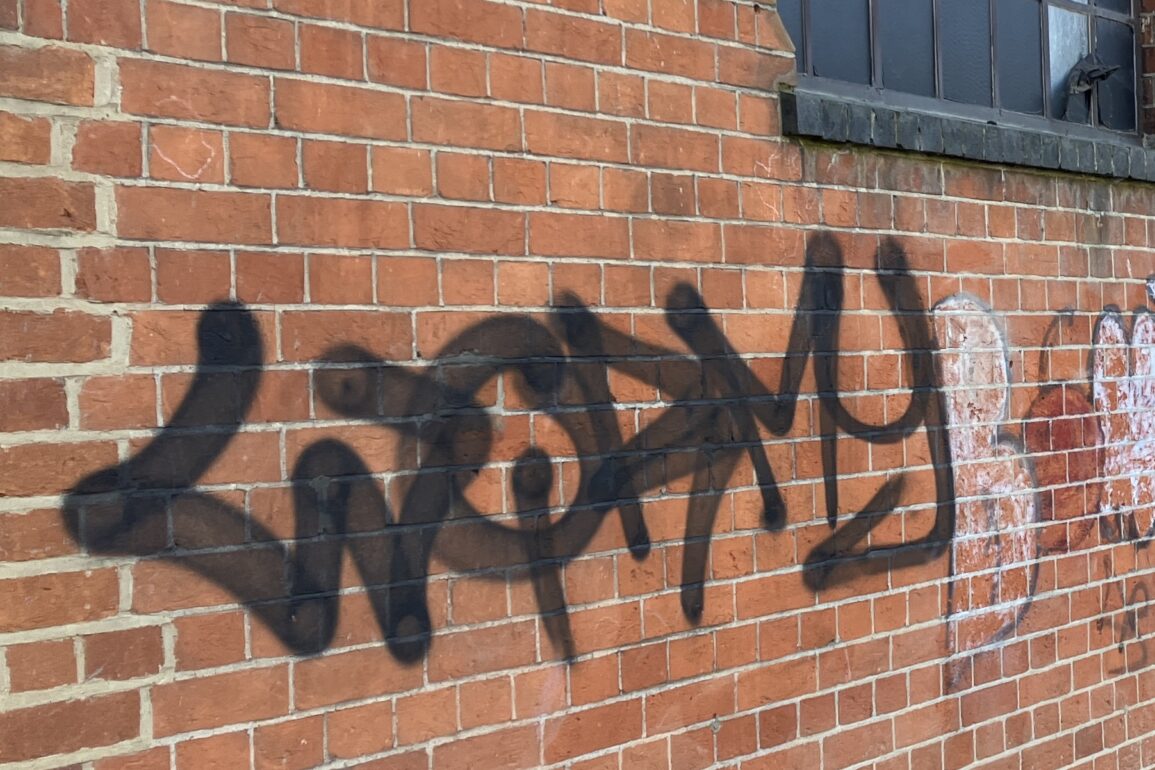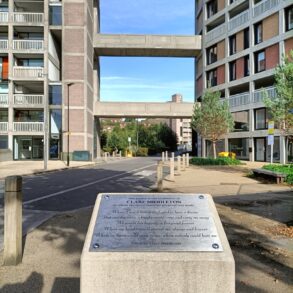Published on: 6 Apr, 2025
Updated on: 6 Apr, 2025
By David Reading
There is a price on the head of the elusive “Wormy”.
Wormy is the name of a graffiti tagger who has been leaving his (or her) mark in public places around Guildford.
Tagging is where a signature is spray-painted in a stylised manner onto a wall, bus shelter, statue, property or any other surface and sometimes has the effect of claiming the surface or area is in the tagger’s territory.
Wormy has become so prolific in the Guildford area that Crimestoppers are offering £1,000 for information leading to his (or her) identity.
Guildford Borough Council is particularly keen to stop Wormy for good and said in a post on social media: “Help keep our streets clean and safe!
“Crimestoppers are offering a £1,000 reward if you can help provide information that leads to an arrest and stop the Wormy graffiti around Guildford.”
Cllr Merel Rehorst-Smith (Lib Dem, Effingham), GBC’s lead councillor for regulatory and democratic services, said: “Graffiti has a negative impact on the appearance of our neighbourhoods.
“The cost of cleaning up these acts of vandalism can run into hundreds, even thousands of pounds.
“If anyone has information that can help to stop this spate of graffiti across Guildford, please get in touch with Crimestoppers.”
True graffiti art has a long and – some would say – respectable history in the UK. Certain types of graffiti have been welcomed and even commissioned. But generally, graffiti is classed as an illegal act, covered by the Criminal Damage Act 1971 and punishable by a large fine, community service order or even imprisonment for more serious cases.
Tagging – such as the graffiti displayed by Wormy – is often associated with the perpetrator’s identification and can be seen as an arrogant and blatant disrespect of the law and, in turn, is acknowledged as antisocial.
The Home Office recently established a campaign referred to as “Name that Tag” in major UK cities including London, Liverpool and Manchester. The scheme offered rewards of £500 to any person who gave significant information concerning repeat offenders with the view to minimising ongoing tagging.
In some areas, tagging can be a reflection of a gang’s territory and for this reason, the tag can have intimidating connotations. Many local authorities have measures in place to minimise and eradicate the problem of tagging, including CCTV, liaison with known gang members, harsh punishments and cleaning programmes for those caught.
See also: Surrey Police Join Local Partners to Tackle ASB in Guildford
Legal source: Local Solicitors. https://www.localsolicitors.com/criminal-guides/graffiti-law-and-criminal-offences
This post was originally published on this site be sure to check out more of their content.









